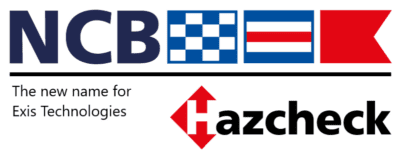Exis Technologies takes part in Misdeclaration of Dangerous Goods Blockchain project – BADGP Newsletter June 2021
In 2018, Bloc, with the support of Lloyd’s Register Foundation, launched the Maritime Blockchain Labs (MBL) initiative to investigate and assess the applicability of blockchain technology for addressing business challenges, and in particular safety in the maritime sector. The objective was to increase the likelihood of creating impactful and scalable technology for the maritime sector focussing on the safety of engineered systems.
One of the Blockchain labs focused on the issue of misdeclaration of dangerous goods. Exis Technologies, a leader in compliance systems (Hazcheck) for the management of dangerous goods in sea transport, was a consortium member in the lab. Other consortium members were Agility, Port+, Flexport, Marine Transport International (MTI), SecureSystem, Copenhagen-Malmo Port (CMP), DSV, X-Press Feeders and Lloyd’s Register Group (LRG). The Blockchain reports have now been published.
Misdeclaration of dangerous goods problem definition
Even with the introduction of fines and deterrents against misdeclaration, there are ongoing issues with large container ships, fires and misdeclared and undeclared cargo. Some solutions exist that support sharing of information, but antitrust laws impede container lines from alerting competitors about rogue shippers or shipments. Despite innovation and technology advancements, industry stakeholders have voiced that these efforts are “not a panacea if the root cause of incidents and losses is not addressed”. Some of these possible root causes, also expressed through the lab, include:-
1) lack of adequate enforcement and adherence to regulations and guidelines for dangerous cargo;
2) avoidance of additional freight charges, or to circumvent rules and requirements on carriage of certain dangerous goods;
3) a lack of adequate training or awareness regarding how to properly package containers, or the compatibility of different cargo types in holds; and
4) the complexity and number of forms for dangerous goods documentation are difficult to fill out properly, and can vary drastically depending on IMDG Code and jurisdiction.
The scope for the lab was to trace an end-to-end delivery of a dangerous good and record all declarations, approvals and receivals along the way which form the basis of the chain of custody for insurance and trust. The aim of the lab was to discourage misdeclaration and support proper documentation and declaration of dangerous goods. To address the challenge of input from multiple data sources as well as sending the data to various applications, a blockchain-based data adapter was proposed. The data adapter is an integration tool that connects various applications together, manages data flows to create data standardisation and connects to distributed ledgers (or blockchains). This adapter was used to (1) facilitate the generation of a regulatory compliant and electronic Dangerous Goods Note at point of origin to reduce human errors relating to documentation; (2) connect to systems that would verify the dangerous goods documentation and eradicate the need for multiple checks and data extraction throughout the supply chain; and (3) automate transactions between different parties.
Conclusion
Overall, this lab showcased how the design and development of a prototype solution can reimagine existing processes and propose new methods for supply chain communication and cooperation. The lab had the following successes:
- Collaboration between industry members resulted in a re-imagining of what the dangerous goods declaration process could look like, and agreement on needed digitalisation of such transactions.
- The combination of technology providers and their respective components created a prototype solution that increased transparency and smoothed the communication of important dangerous goods information between previously separated parties.
- Demonstration of a proof of concept of an end product that traced a dangerous good from end-to-end, and provided increased transparency and efficiency gains to stakeholders throughout the supply chain.
Next steps
Exis Technologies is producing a White Paper that will focus on helping shippers and forwarders interface more effectively with shipping lines, including on topics like the standardisation of dangerous goods shipping documentation that can be used in their Hazcheck Systems. Exis will also to continue to offer a range of e-learning courses for IMDG Code and container packing training. The IMDG Code training courses have been updated to Amendment 40-20 of the IMDG Code and a new range of container packing courses will be launched in early 2022.
The full Maritime Blockchain reports can be found here
James Douglas
CEO







